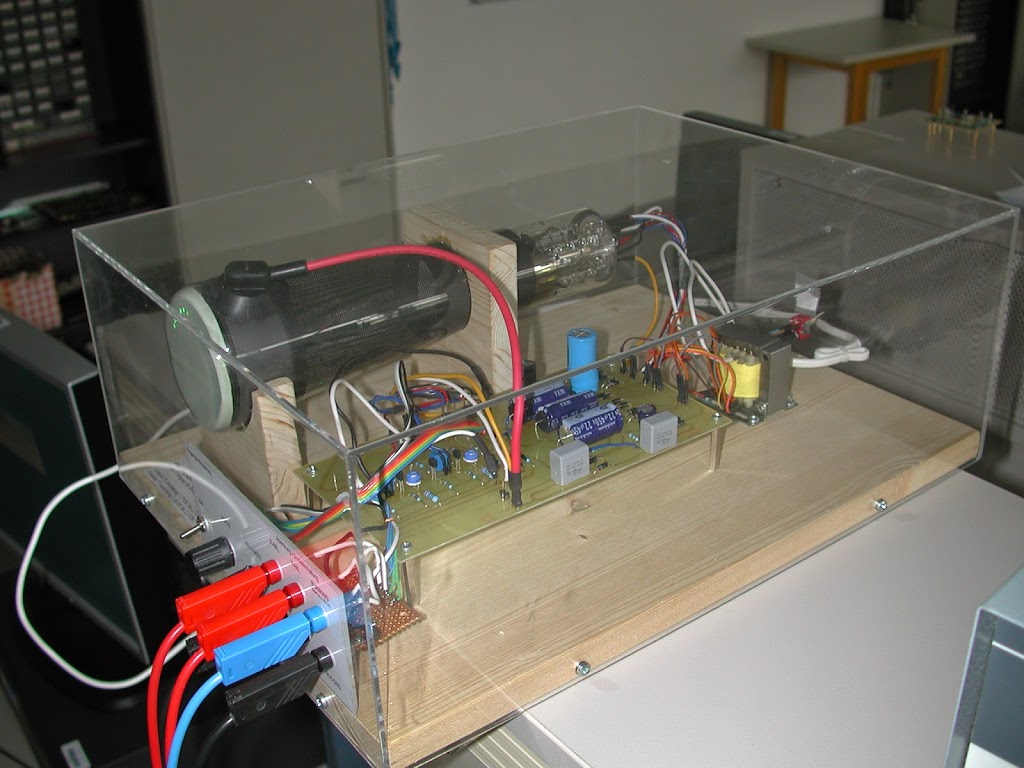![]()
From my youth, these three red boxes came to this article. A relic from the basement of my parents’ house. These are the electronic experiment boxes from Busch. These are the boxes “Compact studio 2060”, the “supplementary package 2061” and the “digital-technik 2075” box.
 |
| Busch electronic 2060, 2061 und 2075 |
The kits are in a relatively good condition, although I’ve made plenty of it as a budding teenager.
The first, so the basic box 2060, I got in the elementary school once for Christmas (must have been so about 1979 – 80), because the predecessor modular system of Philips for lack of knowledge and my urge to experiment unfortunately did not bring the success. (There was one of the transistors quickly broken and nothing worked anymore …) So my parents have looked for a new modular variant, with which I came as an 8-year-old then also coped perfectly. (Of the Philips kits, unfortunately, only fragments and parts of the base plate exist – but I’m currently in the bay looking for a copy of this kit.)
Back to the bush system:
 As you can see in the photo, just about all parts are still present. Neatly I have then combined the two boxes 2060 and 2061 to a box. (Unfortunately)
As you can see in the photo, just about all parts are still present. Neatly I have then combined the two boxes 2060 and 2061 to a box. (Unfortunately)
The company Busch advertised at that time with the following slogan:
“Experiment without prior knowledge!”
 The instruction books were structured in such a way that one quickly came to a sense of achievement and could then also think about the technical background. From the description of the boxes:
The instruction books were structured in such a way that one quickly came to a sense of achievement and could then also think about the technical background. From the description of the boxes:
The “compact studio” 2060 offers about 40 experiments and circuits, such as: “Electronic mini organ, alarm and rain warning systems, automatic flashing and timer, tone generator and audio amplifier,
Sensor key, voltage tester, remote-controlled electronic relay, siren and room switching, light organ principle circuit. ”
One year later, I got the expansion box 2061. With that, experiments such as radio receivers were possible. From the MW and LW receivers to the FM FM receivers, where the inductors for the oscillating circuits themselves had to be wound (of course strictly according to plan).
 Also, the 2061 is in good condition, unfortunately, the plastic retaining clips of the smoked glass plastic cover are broken, so that it rests only on the housing.
Also, the 2061 is in good condition, unfortunately, the plastic retaining clips of the smoked glass plastic cover are broken, so that it rests only on the housing.Here is now plenty of room for the multitude of experiments. Nicely tidied up, with a media panel with built-in potentiometer, variable capacitor for the receiver tuning stories. The loudspeaker is now also integrated in the housing, as well as a slide switch, a moving coil meter and a 5-pin diode socket. (That was a standard for audio connectors at the time).
Again, I tinkered in my childlike carelessness and integrated the LED and a 3.5mm and a 2.5mm jack into the control panel. Unfortunately, this does not look very professional and destroys the originality of the kit.
 Another step was the entry into digital technology with the box 2075.
Another step was the entry into digital technology with the box 2075.Here experiments such as: a 1-bit memory memory, counters with 7-segment LED display, random generators, etc. are built.
The power supply was provided for all experiment boxes with a 9V block battery. As an option, Busch also offered a power supply unit at that time.








